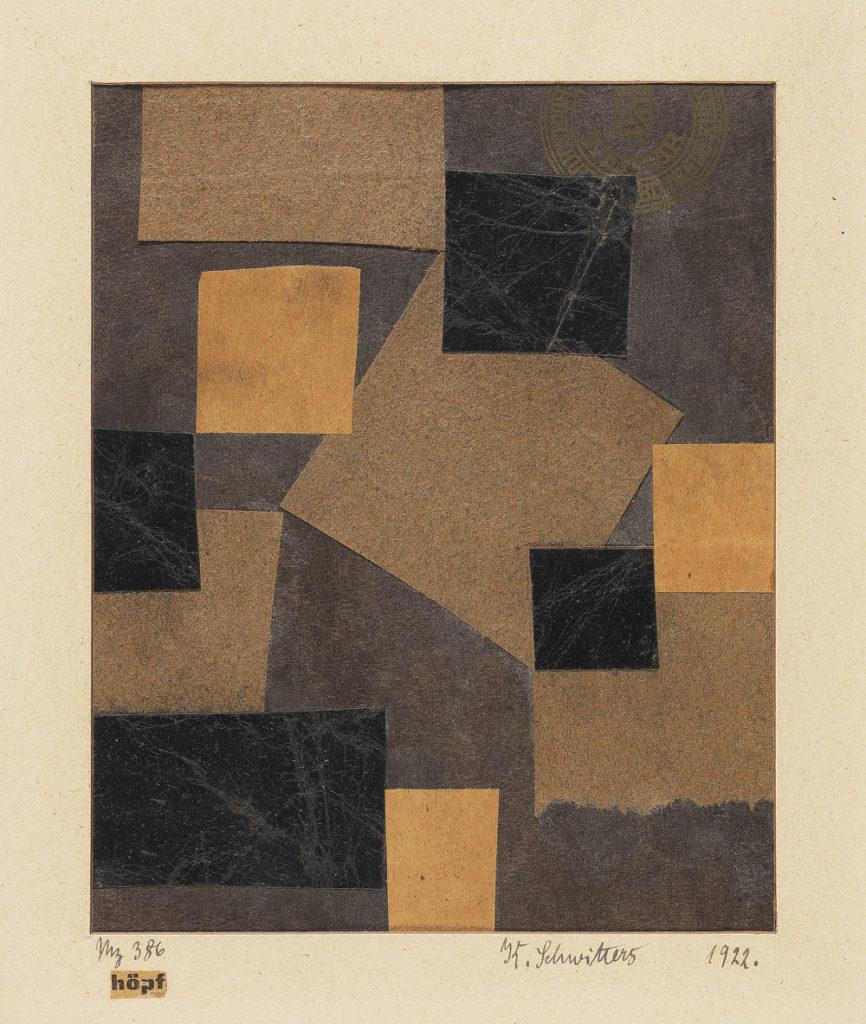Mz 386 Hopf (Merzzeichnung)

The German avant-garde artist Kurt Schwitters (1887-1948) is especially known for his so-called Merzpictures, which he began making towards the end of the 1910s and continued working with throughout his artistic career.
These pictures, or collages, are composed of the most varied waste products and materials, which Schwitters found wherever he was living or working at any given time: a small patch of fabric, fragments of a tram ticket or a page from a newspaper, a torn candy wrapper, part of a postcard, etc. The brusque and uncompromising Mz Höpf 386 is a characteristic example of Schwitter’s collages from the early 1920s. The composition is dominated by rectangular and square pieces of paper that are kept in the same range of values, but with different textures. With one exception the pieces are cut in a straight line with sharp precision. The style is taut and geometrical, and suggests a kinship with Paul Klee and Piet Mondrian, in addition to Jean Arp’s geometrical collages from the end of the 1910s.
OWG